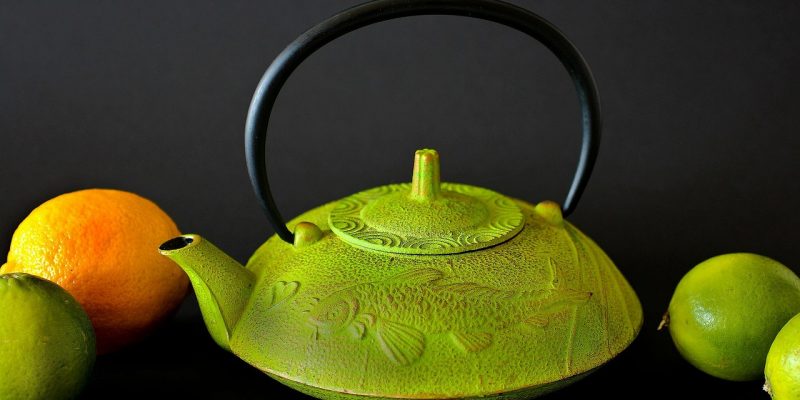Have you ever wondered how some animals are able to change their color? It’s truly a remarkable ability that serves them in various ways. Whether it’s for camouflage, communication, or temperature regulation, these animals have evolved to adapt to their environment in the most incredible ways.
In this article, we will explore ten amazing animals that possess the extraordinary ability to change their color. From reptiles to marine creatures, each of these animals has its unique way of utilizing this skill to their advantage.
Let’s dive into the fascinating world of color-changing animals and discover the secrets behind their remarkable transformations.
Chameleons
These reptiles are famous for their color-changing ability, which they use to blend into their surroundings and communicate with other chameleons.
Chameleons are truly fascinating creatures that have captivated the attention of both scientists and nature enthusiasts. One of their most remarkable features is their ability to change their color, allowing them to blend seamlessly into their environment. This incredible adaptation serves multiple purposes, including camouflage and communication.
When a chameleon changes its color, it is not simply for aesthetic purposes. Instead, it is a highly sophisticated form of camouflage that helps them avoid predators and sneak up on their prey. By adjusting their skin pigments, chameleons can match the colors and patterns of their surroundings, effectively disappearing into the background. This remarkable ability allows them to remain hidden from both predators and unsuspecting prey.
Furthermore, chameleons also use their color-changing ability as a means of communication. They can alter their skin color to convey various messages to other chameleons. For example, a bright and vibrant display may indicate aggression or territoriality, while a more subdued coloration could signal submission or a desire to mate. This unique form of communication helps chameleons establish dominance, attract mates, and maintain social hierarchies within their communities.
In addition to their color-changing ability, chameleons also possess other remarkable adaptations. Their eyes, for instance, can move independently of each other, allowing them to have a 360-degree field of vision. This exceptional visual acuity helps them spot potential threats or prey from various angles. Chameleons also have a prehensile tail, which acts as a fifth limb and aids in their arboreal lifestyle.
Overall, chameleons are truly extraordinary creatures that have evolved unique abilities to survive in their natural habitats. Their color-changing ability not only helps them blend into their surroundings but also serves as a form of communication among their species. By understanding and appreciating these incredible adaptations, we can gain a deeper insight into the wonders of the animal kingdom.
Octopuses
Octopuses are fascinating creatures that possess the remarkable ability to change both the color and texture of their skin. They use this incredible adaptation for various purposes, such as camouflage and intimidation. Through their color-changing abilities, octopuses can blend seamlessly into their surroundings, making them masters of disguise. Whether it’s hiding from predators or stalking prey, these intelligent creatures have perfected the art of camouflage.
Not only can octopuses change their color, but they can also alter the texture of their skin. This allows them to mimic different objects or surfaces, further enhancing their ability to hide in plain sight. By adjusting the bumps, ridges, and patterns on their skin, octopuses can create a convincing illusion that helps them evade detection. This incredible skill not only aids in their survival but also showcases their adaptability and ingenuity in the animal kingdom.
Cuttlefish
Cuttlefish
Similar to octopuses, cuttlefish possess the remarkable ability to rapidly change their color and pattern. This unique skill allows them to seamlessly blend into their environment or attract a mate. Whether it’s the vibrant hues of a coral reef or the sandy tones of the ocean floor, cuttlefish can effortlessly mimic their surroundings.
How do they achieve this incredible feat? Cuttlefish have specialized cells called chromatophores in their skin that contain pigments. By expanding or contracting these cells, they can alter the colors and patterns displayed on their skin. This ability not only helps them camouflage and avoid predators but also enables them to communicate with other cuttlefish.
When it comes to attracting a mate, male cuttlefish put on a mesmerizing display. They can rapidly change their skin color and pattern to create intricate and mesmerizing visual patterns. This impressive courtship behavior helps them catch the attention of females and establish their dominance.
Flounders
Flounders are flatfish that possess a remarkable ability to mimic the color and texture of the ocean floor. This unique adaptation allows them to hide from both predators and prey, making them highly skilled masters of camouflage. By blending seamlessly into their surroundings, flounders are able to avoid detection, giving them a significant advantage in the underwater world.
Their ability to change their color and texture is a result of specialized cells called chromatophores in their skin. These cells contain pigments that can expand or contract, allowing the flounder to match the color and pattern of the ocean floor. This incredible camouflage helps them to blend in with their environment, making it difficult for predators to spot them and increasing their chances of survival.
Peacock Mantis Shrimp
The Peacock Mantis Shrimp is a fascinating creature known for its vibrant colors and unique ability to change the color of its exoskeleton. This crustacean is not only a master of disguise but also uses its color-changing ability to communicate with other mantis shrimps and display dominance.
When it comes to communication, the Peacock Mantis Shrimp uses its colorful exoskeleton to send signals to other shrimps. By changing the intensity and pattern of its colors, it can convey various messages such as aggression, territoriality, or courtship. This visual communication is crucial in establishing dominance and resolving conflicts within their social hierarchy.
Additionally, the ability to change color also helps the Peacock Mantis Shrimp in blending into its surroundings. When hunting for prey or evading predators, it can adjust its exoskeleton to match the colors and patterns of the coral reefs or rocky habitats where it resides. This camouflage allows it to remain hidden and increases its chances of survival.
The vibrant colors displayed by the Peacock Mantis Shrimp are truly remarkable and serve multiple purposes in its daily life. Whether it’s communicating with other shrimps or camouflaging itself, this crustacean’s color-changing ability is a testament to the wonders of nature.
Arctic Foxes
In the winter, these foxes change their fur color from brown to white to blend into the snowy landscape, providing them with excellent camouflage.
Arctic foxes are fascinating creatures that have adapted to survive in extreme cold environments. One of their most remarkable abilities is their ability to change their fur color. During the winter months, when the landscape is covered in a thick layer of snow, these foxes transform their brown fur into a beautiful white coat.
This color change allows them to blend seamlessly into their surroundings, making it incredibly difficult for predators to spot them. Their white fur acts as a natural camouflage, helping them to sneak up on their prey or hide from potential threats. It’s like wearing a perfect disguise that allows them to move undetected in the snowy landscape.
Not only does the color change provide excellent camouflage, but it also helps the arctic foxes to regulate their body temperature. The white fur reflects sunlight, preventing excessive heat absorption and keeping them cool. In contrast, during the summer months when the snow melts, their fur changes back to brown, allowing them to blend in with the tundra and rocky terrain.
This incredible adaptation showcases the arctic fox’s ability to survive in harsh conditions. Their color-changing fur is a marvel of nature, providing them with both protection and the ability to thrive in their icy habitat.
Golden Tortoise Beetle
The Golden Tortoise Beetle is a fascinating insect that possesses the incredible ability to change its color from gold to red. This unique adaptation serves as a defense mechanism, allowing the beetle to startle predators and make itself appear less appetizing.
When threatened, the Golden Tortoise Beetle undergoes a remarkable transformation. It secretes a liquid substance that causes its exoskeleton to change color, creating a sudden and dramatic shift from its original golden hue to a vibrant red. This sudden change startles predators, making them think twice before considering the beetle as a potential meal.
This color-changing ability is not only a means of defense but also a form of communication. By altering its color, the Golden Tortoise Beetle sends a clear warning signal to potential predators, indicating that it is not an easy target. This adaptation showcases the beetle’s survival instincts and its ability to navigate its environment effectively.
In addition to its color-changing prowess, the Golden Tortoise Beetle has a unique appearance that further enhances its defense strategy. Its body is covered in domed, shell-like structures, resembling a tiny golden tortoise. This physical resemblance, combined with its ability to change color, creates a powerful deterrent for predators.
Overall, the Golden Tortoise Beetle is a remarkable example of nature’s ingenuity. Its ability to change color from gold to red serves as both a defense mechanism and a form of communication. This small beetle’s adaptation allows it to startle predators and make itself less appetizing, ensuring its survival in the wild.
Flamboyant Cuttlefish
One of the most fascinating animals that can change its color is the Flamboyant Cuttlefish. This unique species can be found in the waters of Southeast Asia, where it displays vibrant colors as a warning to predators of its toxic nature.
The Flamboyant Cuttlefish has the ability to change its color rapidly, creating a mesmerizing display of hues. It uses this color-changing ability as a defense mechanism, signaling to potential predators that it is not to be messed with.
This small cephalopod is known for its striking appearance, with vibrant patterns of red, yellow, purple, and blue. By displaying these colors, the Flamboyant Cuttlefish warns predators that it is poisonous and should be avoided. This is a prime example of how color can be used as a form of communication in the animal kingdom.
Not only does the Flamboyant Cuttlefish use its color-changing ability to warn predators, but it also uses it to attract mates. During courtship, the male will display a dazzling array of colors to impress the female. This vibrant display is a visual representation of the male’s fitness and genetic quality.
In conclusion, the Flamboyant Cuttlefish is a remarkable creature that can change its color to warn predators of its toxic nature. Its vibrant display serves as a powerful form of communication, allowing it to thrive in the waters of Southeast Asia.
Leafy Seadragon
The leafy seadragon is a fascinating creature that possesses unique adaptations for survival. With its leaf-like appendages and the ability to change color, this marine animal is a master of disguise. Found in the coastal waters of Australia, the leafy seadragon perfectly blends in with its environment, specifically among seaweed and kelp.
One of the most striking features of the leafy seadragon is its leaf-like appendages that resemble floating seaweed. These appendages not only provide camouflage but also help the seadragon to blend in seamlessly with its surroundings. Its body is covered in leaf-like projections, ranging in color from brown to green, which further enhance its ability to mimic the surrounding seaweed and kelp.
In addition to its leaf-like appearance, the leafy seadragon has the remarkable ability to change color. It can adjust its skin pigments to match the colors of the surrounding seaweed and kelp, allowing it to blend in even more effectively. This color-changing ability is essential for the seadragon’s survival, as it helps it avoid detection by predators and ambush its prey.
The leafy seadragon’s camouflage is so effective that it can be difficult to spot even when it is right in front of you. Its ability to perfectly blend in with its environment is a testament to the wonders of nature’s adaptations. The leafy seadragon is truly a remarkable creature that showcases the beauty and complexity of the animal kingdom.
Reef Stonefish
The reef stonefish is a fascinating creature known for its ability to change its color and texture to blend in with its rocky surroundings. This remarkable camouflage makes it almost invisible to its prey, allowing it to patiently wait for unsuspecting victims to come within striking distance.
Not only is the reef stonefish a master of disguise, but it is also one of the most venomous fish in the world. Its venomous spines, located on its dorsal fin, are capable of delivering a painful and potentially deadly sting. This venomous defense mechanism, combined with its ability to blend in seamlessly with its environment, makes the reef stonefish a formidable predator.
Frequently Asked Questions
- Q: How do chameleons change their color?
A: Chameleons have specialized cells called chromatophores in their skin that contain different pigments. By expanding or contracting these cells, chameleons can change the wavelengths of light that are reflected, thus changing their color.
- Q: Why do octopuses change their color and texture?
A: Octopuses change their color and texture to blend into their surroundings and avoid predators. They can also use these changes to communicate with other octopuses or to display aggression when threatened.
- Q: How do flounders mimic the ocean floor?
A: Flounders have specialized skin cells that can change their color and texture to match the sandy or rocky ocean floor. This allows them to hide from both predators and prey, making them highly effective ambush predators.
- Q: What purpose does the color change serve in Arctic foxes?
A: The color change in Arctic foxes serves as camouflage in their snowy habitat. By changing their fur color from brown to white during winter, they can blend in with the snow and increase their chances of hunting or avoiding predators.
- Q: Why does the golden tortoise beetle change its color?
A: The golden tortoise beetle changes its color as a defense mechanism. When threatened, it can change from its golden hue to a vibrant red color, startling predators and making itself less appetizing.
- Q: What is the purpose of the vibrant colors displayed by the flamboyant cuttlefish?
A: The flamboyant cuttlefish displays vibrant colors as a warning to predators. These colors indicate that the cuttlefish is toxic and should not be approached or consumed.
- Q: How does the leafy seadragon use color change for camouflage?
A: The leafy seadragon can change its color to blend in with seaweed and kelp, effectively camouflaging itself. This helps the seadragon avoid detection by predators and allows it to ambush prey more effectively.
- Q: Why does the reef stonefish change its color and texture?
A: The reef stonefish changes its color and texture to blend in with its rocky surroundings. By doing so, it becomes almost invisible to its prey, increasing its chances of successful hunting.









